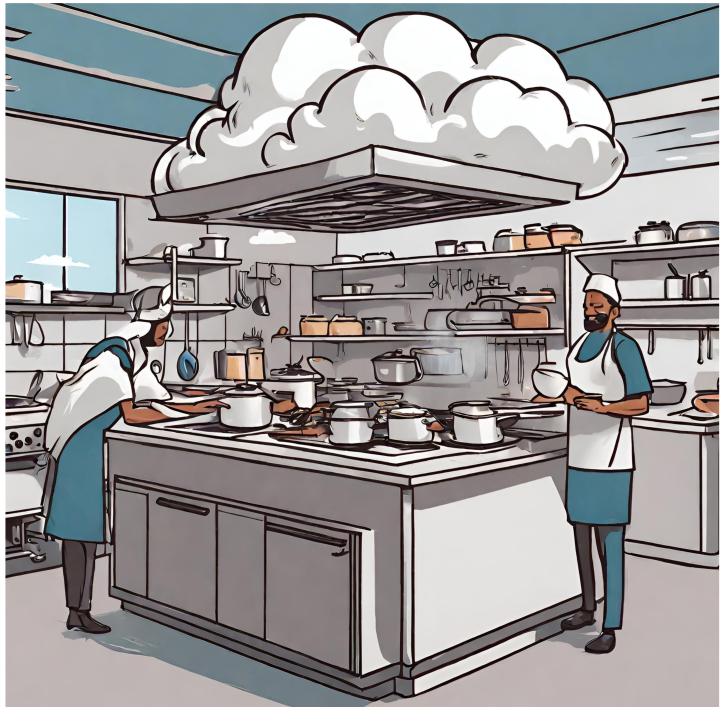So, Is Cloud Kitchen just a concept? No! Not anymore with the rising demands for online food delivery and consumer inclination toward online food services over dining experiences has encouraged several restaurateurs to opened cloud kitchens,
Online food ordering and delivery services have gained popularity among consumers lately. The year 2020, have kickstarted a digital transformation to many businesses, In fact, COVID-19 pandemic has been a boon to small local business.
Cloud kitchens have also been referred to as ghost kitchens, shared kitchens, and dark kitchens. They are commercial kitchen spaces and their main purpose is to prepare and deliver food. A cloud kitchen is part of a delivery-only restaurant model where you would rent out a kitchen, just a kitchen and this is where your restaurant or virtual brands’ such as Behrouz Biryani, Faasos & Freshmenu are one of the top virtual brands in Indian food would be prepared and delivered from.
Cloud kitchens can be used for two things. They can be used to expand the delivery range of an existing brand or they can be used to create a new business. Take a local fast food shop for example. If they wanted to increase their delivery reach to a new area in their city, they can essentially open a second location by leasing a cloud kitchen in that new area, and then they are able to serve that area.
On the other hand, you can use cloud kitchens to start a new business. For example, you can create a virtual food brand where food aggregator apps like Zomato, Swiggy DoorDash, and UberEats, Yelp, Deliveroo are your exclusive storefront and your brands’ food would be prepared and delivered from a cloud kitchen. Types of Cloud Kitchens A single cloud kitchen can house multiple food concepts .multiple brands, essentially meaning that they’re preparing food as different virtual brands.
So what exactly Is a Virtual Restaurant?
A virtual restaurant is a restaurant that does not exist in its own space. It only exists on digital food delivery platforms. Unlike regular cloud kitchens, virtual restaurants don’t lend from third parties. Virtual restaurants are established restaurants using their existing kitchens to maximize their profits by creating additional delivery-only menus.
Companies like Next Bite and Virtual Dining Concepts claim to have data-driven and already established virtual brands. Basically, your conventional brick-n-mortar would become a virtual restaurant that prepares the food for one of its established virtual brands. All you would have to do is prepare and facilitate the food in your restaurants’ kitchen and you would earn a percentage of the profits. Virtual Dining Concepts specifically states existing restaurants can partner with their established virtual brands and earn ‘X’ % of the profits they generate.
Virtual brands have celebrity names attached to them. One of the latest virtual brands is called “Mr. Beast Burger”, a fast-food-style virtual burger brand partnered with the YouTube celebrity Mr. Beast. The youtube channel “Mr. Beast” has over 61 million subscribers. In its first 3 months, the virtual brand, “Mr. Beast Burger” sold 1 million burgers throughout their 300 virtual restaurant locations. That averages out to about 40 burgers sold per virtual restaurant, every day. Another example of Rapper Wiz Khalifa’s first virtual food brand name ”HotBox” menu serves like Mac & Yellow (mac&cheese) named after his famous song,. The idea is that physical restaurants can maximize their profits by sharing their existing kitchen space with established virtual brands.

